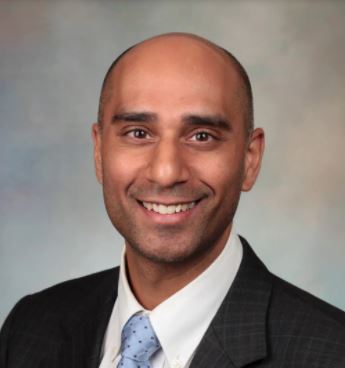High Blood Pressure of Undiagnosed Young Adults
A silent epidemic is spreading among young adults, one that is common among middle-aged individuals and senior citizens.
That epidemic is high blood pressure, also known as hypertension (HTN).
Ironically, people generally associate HTN with senior citizens. Still, the truth is that a growing segment of society (ages 16-24) is at risk for hypertension, especially since the condition can be asymptomatic, as many younger adults may have it and are unaware of it.
High Blood Pressure and the Growing Number of Undiagnosed Young Adults
A high blood pressure reading is 130/80 mmHg, while a normal reading is 120/80 mm Hg. The top number (systolic blood pressure) is the pressure of vessels when the heart beats and pumps out blood.
The bottom number (diastolic pressure) is the pressure in blood vessels when the heart is at rest and filling up with blood. This shows how hard your heart has to work to pump blood throughout your body. The higher the blood pressure reading, the harder your heart must work to keep you alive.
According to the Office for National Statistics, in the UK, 66% of males and 26% of females ages 16 to 24 have high blood pressure that goes undiagnosed.
Meanwhile, 1 in 8 young adults under age 40 suffer from high blood pressure across the pond.
Why is High Blood Pressure in Young Adults So Dangerous?
High blood pressure at a young age can lead to serious heart problems like strokes and heart attacks later in life. The recommendations from the common guidelines provided by the American College of Sports Medicine (ACSM) and other health authorities emphasizes the importance of stopping smoking and using alcohol in moderation as part of a heart-healthy lifestyle.
Plus, according to a study published in the AHA Journal Circulation, young adults ages 16-24 are at an increased risk for stroke, heart attacks, heart failure, and other cardiovascular diseases by a staggering 67 percent as they grow into middle age!
Statistics also show that individuals who identify as healthy are less likely to seek annual health checks. This is also true for young adults with undiagnosed hypertension. In the UK, for instance, 41 percent of males and 28 percent of females with undiagnosed hypertension self-reported as being healthy or very healthy.
What Can Be Done?
High blood pressure doesn’t discriminate and affects people of just about any age group, even young adults.
Young adults must take charge of their health, as this will ensure the best opportunity for a long, happy, and healthy life.
Lifestyle Changes
In addition to regular blood pressure monitoring, adopting a healthy lifestyle is crucial for helping to prevent hypertension in the long run.
It is recommended to restrict your sodium consumption to under 2.5 grams each day. This quantity is approximately equivalent to one teaspoon of salt (5g).
- When grocery shopping, read food labels to determine sodium amount and remember to look at the serving size.
- Avoid processed foods as they are packed with sodium.
- Control the amount of sodium in your food by making more home-cooked meals instead of dining out at restaurants or getting take out.
- Lower high blood pressure by up to 11 mm Hg by consuming a fiber-rich, low-saturated fat, low-cholesterol diet containing whole grains, fruits, and vegetables.
- Get more exercise. Engaging in 150 minutes of aerobic exercise per week (spread over 5-7 days) and strength training 2-3 times per week can reduce high blood pressure by approximately 5 to 7 mm Hg.
- Stop smoking and use alcohol in moderation, which means one drink a day for women or two drinks a day for men. Be mindful about said drink quantity though! One standard drink can differ based on its alcohol by volume (ABV) percentage.
Stay informed about the latest advancements in blood pressure monitoring technology and take control of your health. Sign up for our newsletter now!
Regular Monitoring
Everyone, even young adults, should take a proactive approach to blood pressure health with regular monitoring, especially those with a family history of high blood pressure.
For many people, high blood pressure does not present any symptoms and, as a result, can go undiagnosed for many years. We, at Aktiia, have developed a wearable blood pressure monitor allowing 24/7 blood pressure readings.
With easy and convenient monitoring using our optical blood pressure measuring technology, anyone, including young adults, can gain a comprehensive blood pressure reading anytime and improve their overall health.
Learn more about the Aktiia wearable today.
Disclaimer: If you are concerned about your blood pressure, it is best to speak to your doctor. They can advise on the best way to manage your blood pressure.
Sources:
Managing stage 1 hypertension: Consider the risks, stop the progression, Cleveland Clinic Journal of Medicine, May 2022 – https://www.ccjm.org/content-895244
Risk factors for undiagnosed high blood pressure in England: 2015 to 2019, ONS, 27 Apr 2023 –https://www.ons.gov.uk/health-and-well-being-risk-factors-for-undiagnosed-high-blood-pressure
Cardiovascular Risk of Isolated Systolic or Diastolic Hypertension in Young Adults, Circulation, 1 June 2020 – https://doi.org/CIRCULATIONAHA
Why People Do Not Attend Health Screenings, MDPI, 17 May 2020 – https://doi.org/103390-ijerph17103495
Effects of Sodium Reduction and the DASH Diet, National Library of Medicine, 12 Nov 2017 – https://www.ncbi.nlm.nih.gov/articles-PMC5742671
Exercise for the Prevention and Treatment of Hypertension, ACSM, 27 Feb 2019 – https://www.acsm.org/blog-detail-exercise-hypertension-prevention-treatment
Investigation and Treatment of High Blood Pressure in Young People, AHA Journals, 18 Nov 2019 – https://www.ahajournals.org/HYPERTENSIONAHA
‘Time bomb’ of childhood blood pressure revealed, University of Essex, Jun 24 – https://www.essex.ac.uk/news/2024/06/18/ticking-time-bomb-of-childhood-blood-pressure-revealed



